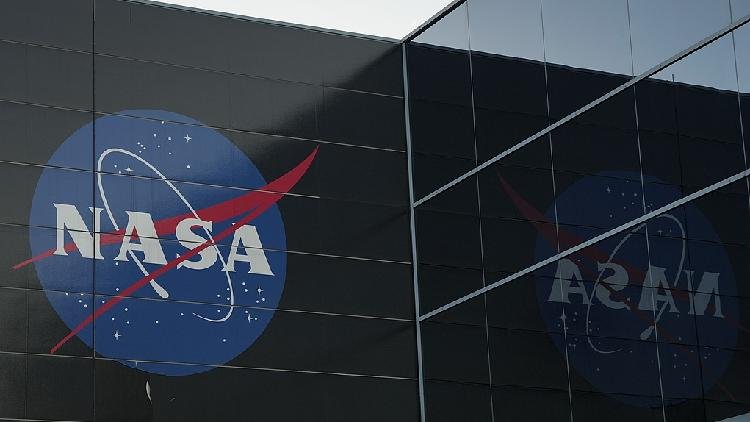Trump's 2026 Space Budget Proposes Cancelling NASA Rocket, Lunar Station
U.S. President Donald Trump's budget proposal aims to significantly reduce funding for key components of NASA's moon program, including a $6 billion cut to the agency's budget for 2026. In contrast, it provides additional support for the Mars...

Released on Friday, the outline of Trump's proposed 2026 budget would cancel NASA's over-budget Space Launch System, a massive rocket developed by Boeing and Northrop Grumman, as well as its Orion crew capsule constructed by Lockheed Martin, after their third mission in 2027 under the Artemis program.
The proposal suggests slashing 24 percent from NASA's existing budget of $24.8 billion, potentially jeopardizing major science programs that impact thousands of researchers globally. It threatens to disrupt long-standing contracts maintained through years of lobbying in Washington by established NASA contractors and could overturn missions and initiatives in collaboration with U.S. allies like the European Space Agency, Canada, and Japan.
Most areas of NASA would face significant cuts, except for its human exploration sector, where an additional $1 billion has been proposed for "Mars-focused programs." This indicates a substantial shift in focus for the Artemis initiative, aligning more closely with Musk's vision for human travel to Mars.
In a summary of the budget, the White House described the SLS and Orion as "grossly expensive" and noted that costs have far exceeded initial budgets. Critics argue that these cuts, including a 47 percent reduction to NASA's science budget, represent "a historic step backward" for the nation's space endeavors.
The Artemis program, which began during Trump's first term, intends to return humans to the moon before Chinese astronauts arrive on the lunar surface by 2030. This program is viewed as a testing ground for future Mars missions and has evolved into a multibillion-dollar effort at the forefront of a growing global space race, attracting numerous private companies and nations.
Trump's current administration is focused on sending humans to Mars, a goal long pursued by Musk, who also served as an advisor to the president and spent $250 million on Trump's campaign for re-election.
SpaceX's Starship rocket, a crucial element of Musk's Mars vision, is under contract to land NASA astronauts on the moon in 2027. This aligns with other vehicles involved in the program, such as the SLS and Orion, which are essential for transporting astronauts from Earth.
"The budget phases out the grossly expensive and delayed Space Launch System rocket and Orion capsule after three flights," according to the budget summary, which highlighted the SLS's per-launch cost at $4 billion. Since 2010, the rocket's development expenses have totaled approximately $23 billion, representing "140 percent over budget."
"The budget funds a program to replace SLS and Orion flights to the moon with more cost-effective commercial systems that would support more ambitious subsequent lunar missions," the summary added.
The Planetary Society, a space policy organization founded by scientist Bill Nye, commented that "this proposed cut would represent a historic step backward for American leadership in space science, exploration and innovation," referring to the overall budget reduction.
The budget plan outlines a parallel agenda for moon and Mars missions, seemingly balancing pressure from Congress and the space industry to uphold the moon program with demands from Musk's network to prioritize the Mars initiatives.
Jared Isaacman, Trump's nominee for NASA, a billionaire private astronaut and SpaceX customer, expressed similar thoughts during his confirmation hearing last month. He is expected to receive a Senate vote later this month regarding his potential role as NASA administrator.
Additionally, significant contracts are at risk. Lockheed Martin, which is contracted to build Orion crew capsules for Artemis 8, faces potential termination of at least $4 billion in dealings. Kirk Shireman, Lockheed's vice president of human space exploration, indicated on Thursday prior to the budget announcement that they are "working to even accelerate our work production for Artemis 3, 4, 5 and beyond," and that NASA has been encouraging this pace.
The budget would also put an end to the Gateway station, designed as a research hub and transfer point between Earth-launched spacecraft and lunar landers. The Gateway was intended to orbit the moon and was slated for initial deployment during Artemis 4.
Northrop Grumman holds a $935 million contract with NASA to provide a Gateway module, which was delivered last month by subcontractor Thales Alenia Space. Northrop has recorded approximately $100 million in charges related to the program, according to securities filings.
It remains unclear what lunar missions Trump's NASA plans to pursue after Artemis 3, although they would likely favor rockets produced by SpaceX and Jeff Bezos’ Blue Origin, which is also developing a moon lander for use in future Artemis missions.
Additionally, an agreement reached last year between NASA and Japan to include Japanese astronauts in a forthcoming Artemis moon mission marks a key development in the U.S.-Japan alliance, aimed at placing the first Asian astronaut on another celestial body.
NASA has stated that components of the Gateway already under construction can be repurposed for other missions, and that "international partners will be invited to join these renewed efforts."
James del Carmen contributed to this article for TROIB News
Discover more Science and Technology news updates in TROIB Sci-Tech












